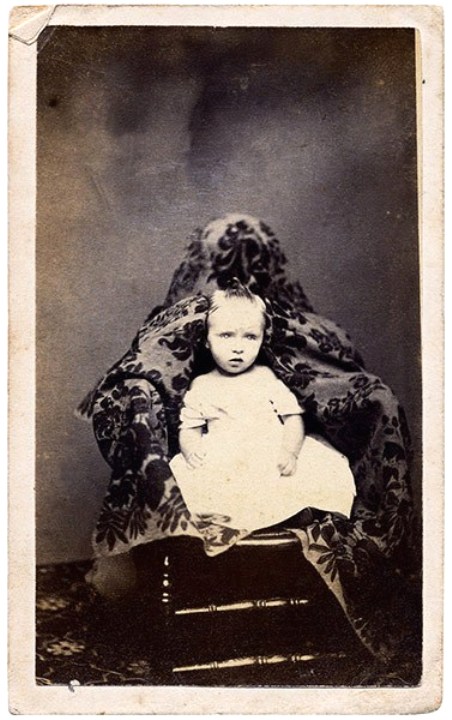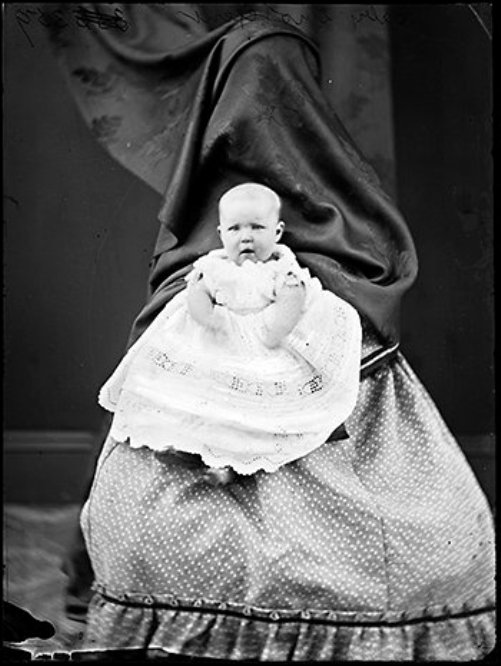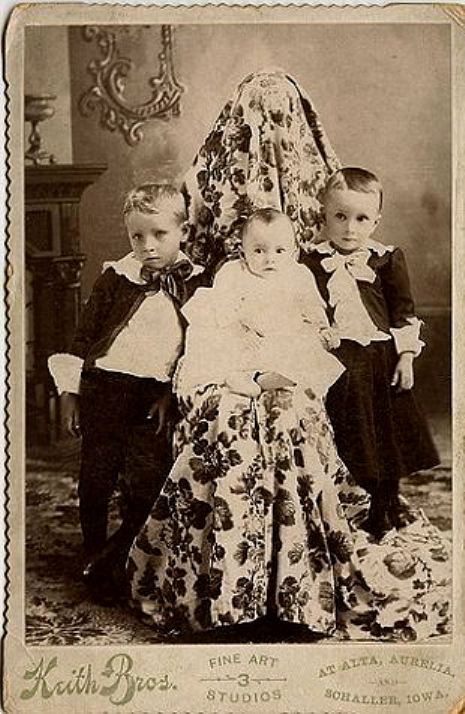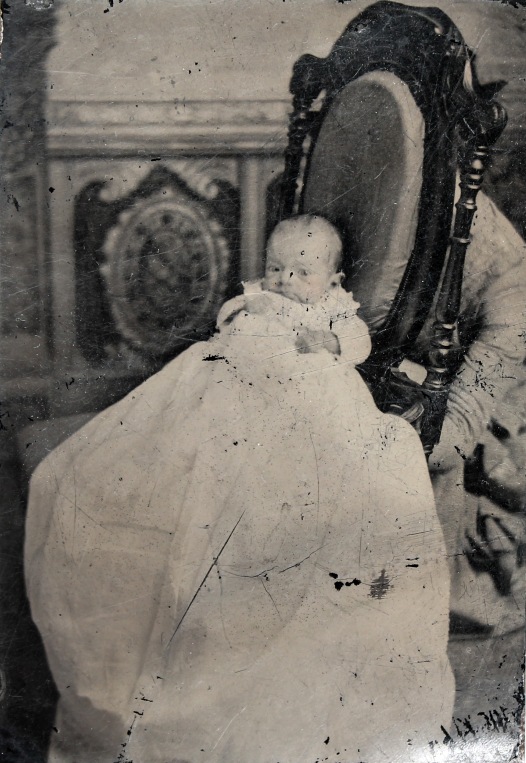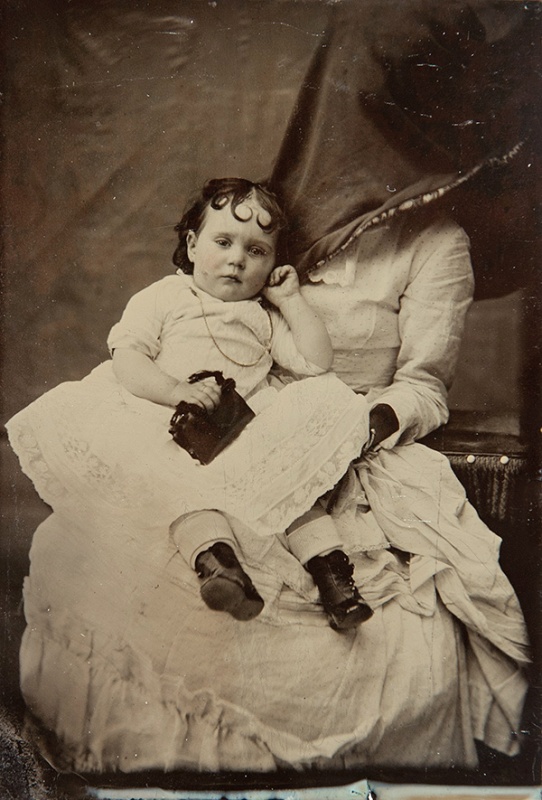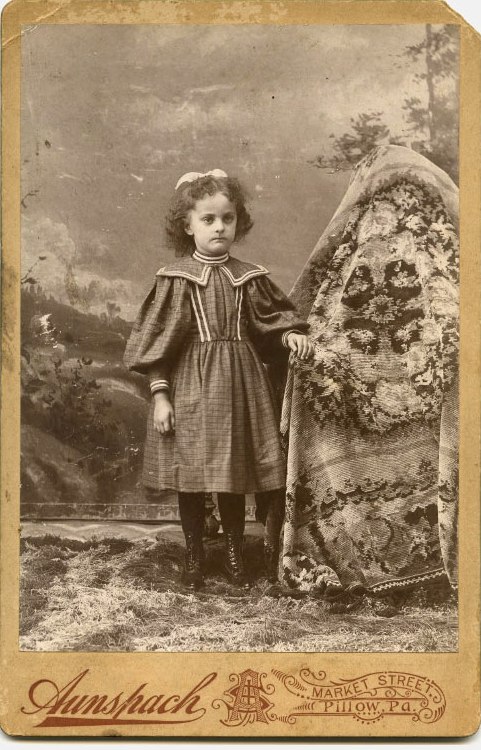
On this month's Morbidly Fascinating Page:
Why did mothers hide in early photos of their children?
(with a photo gallery at the bottom of this page)
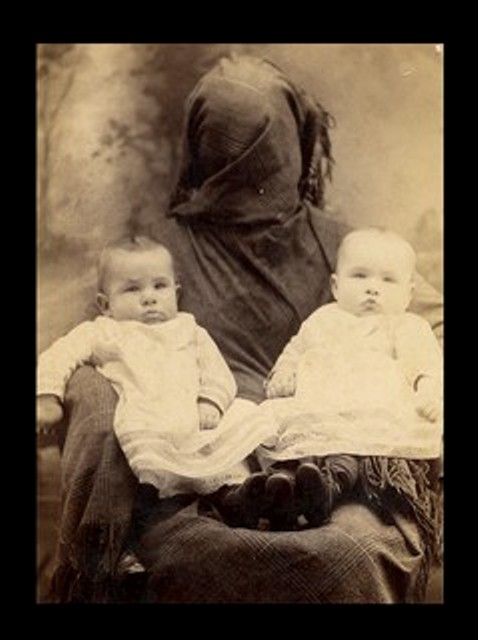
Hidden mother photography is a genre of photography common in the Victorian era in which young children were photographed with their mother present but hidden in the photograph.
Why did the mothers hide from the photographers?
Hidden mother photography is a genre of photography common in the Victorian era in which young children were photographed with their mother present but hidden in the photograph. It arose from the need to keep children still while the photograph was taken due to the long exposure times of early cameras.
But why did the mothers hide? Why not create a portrait that portrayed familial love and affection? Linda Fregni Nagler, an Italian-Swedish artist and publisher of 2013 book, The Hidden Mother, believes the trend started because parents wanted to create “an intimate bond between the child and the viewer,” thus, leaving the mother out of the equation. Another theory stems from the fact that, in the Victorian era, photographing a loved one was such a rarity. Parents wanted images of their children alone that they could use to send to family members.
Still, others wonder if this could have been part of the long tradition of erasing a woman’s work from the eyes of onlookers. Sure, some of these portraits have been found to include the occasional father, nanny, or photographer’s assistant hidden in plain sight, but the majority of the “pictured” caregivers are mothers.
Or it could have been for practicality. It might have arisen from the need to keep children still while the photograph was taken due to the long exposure times of early cameras. Conventional wisdom is that these photographs were meant to be framed behind a cut-out mat (also called a mount or an overlay) to reveal the centred child, while concealing the adult in the margins.
As photography became more the norm, mothers became less camera-shy, since many subjects did not feel natural in front of the camera. The practice of hiding mothers in baby portraits faded by the 1920s. But, we have been left with photos that captured some very grim facets of the era, a time when antiquity and the modern age collided in a unique way.
See more HERE
What is a daguerreotype?
The first publicly announced photographic process was the daguerreotype process, invented by Louis Daguerre. The process required several minutes of exposure in the camera and produced beautifully clear and detailed images. In a daguerreotype, the image is developed on thin silver-plated copper sheets and has a reflective quality that can make it look like the image is floating above the metal’s surface. The surface of the image is quite delicate and would be covered with a protective sheet of glass. Creating a daguerreotype was expensive and time consuming, and by the 1860s it had mostly been replaced by newer, more practical processes like the tintype.
A tintype, also known as a ferrotype, is easily identifiable: the photograph is on a thin sheet of metal coated with a dark lacquer or enamel. While a tintype has a metallic sheen, it is not highly reflective like a daguerreotype and has a noticeably darker tint overall. The tintype process was quick, inexpensive, and durable, and proved to be an immediate public success: a person could sit down, have their photo taken, and walk out with the tintype mere minutes later.
See more HERE
What is a modern analysis of hidden mother photography?
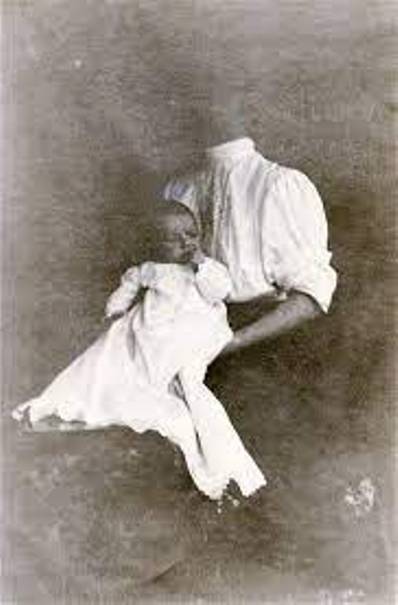
Unable to vote, confined by the cultural ideal that homemaking should appear effortless, and liable to have their paid labor misconstrued as a sign that their bodies could be bought, 19th-century women were erased and silenced in myriad ways, of which these photos seem to be just one more example. But the truth is that, both within broader culture and within these pictures, mothers were ‘not there’ only when people agreed to pretend not to see them.
These photos make literal the expectations placed upon Victorian women: to be manifestly embodied, laboring, supportive beings. Erasing her is therefore a willful act.
See more HERE
PHOTO GALLERY OF HIDDEN MOTHERS

